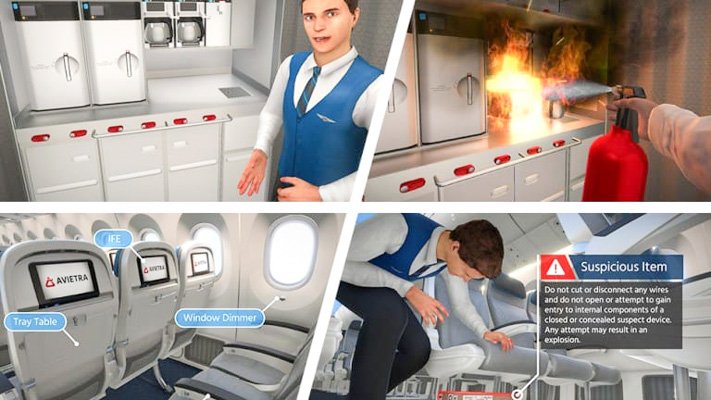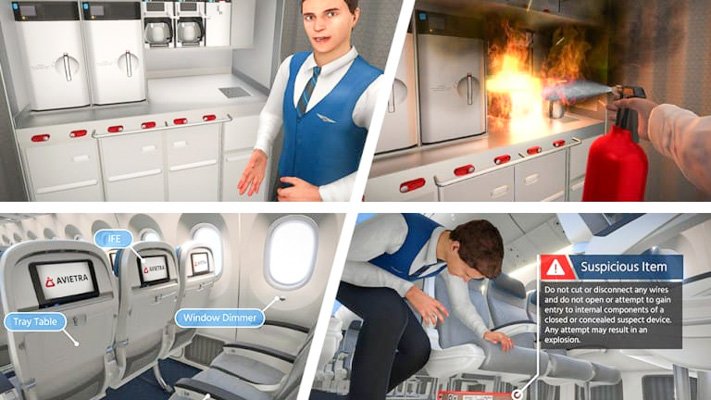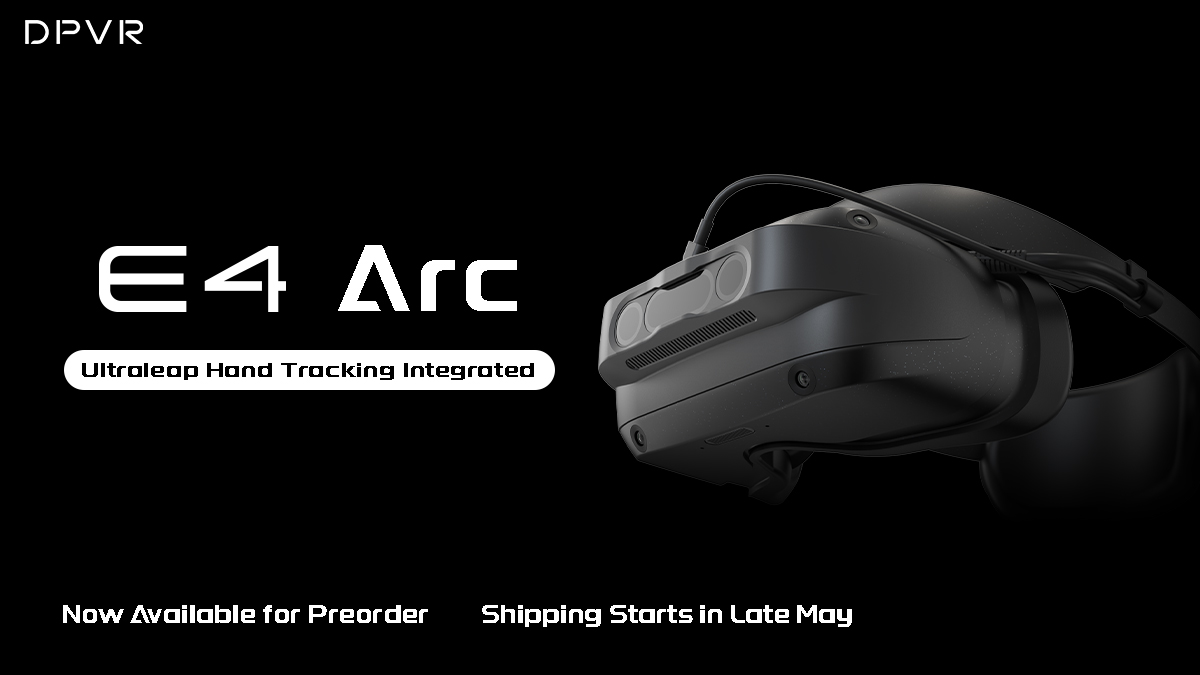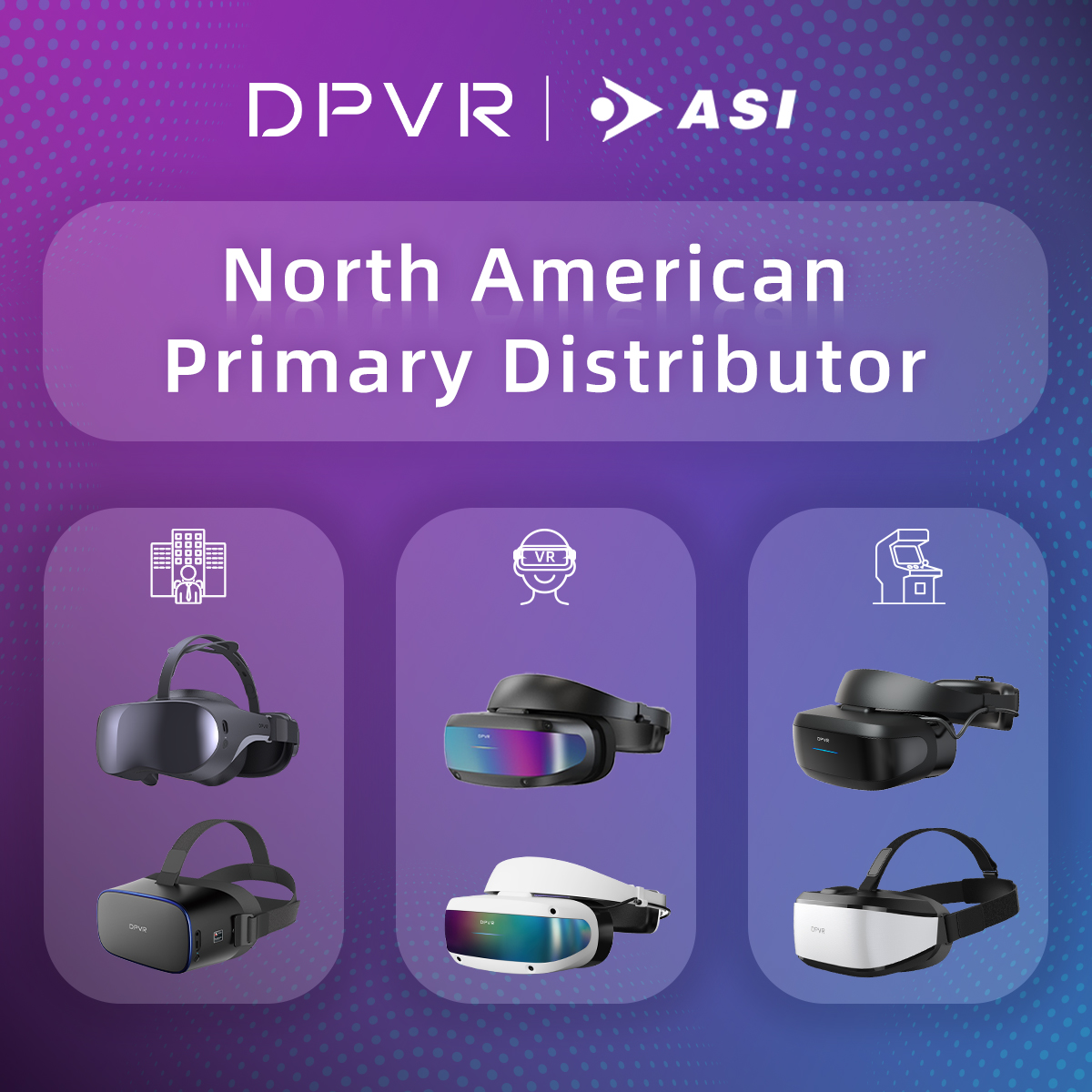Airlines using virtual reality

"Aviation is one of the biggest global industries that has to recover quickly from the global travel vans. The most innovative companies will use new ways to achieve this and can use virtual reality to improve services, efficiencies & staff competence. "
Derek Liu - Global Head of Sales & Marketing at DPVR
The airline industry is experiencing many trends as it battles its way through its recovery from the global epidemic and the irreparable losses many companies have suffered as a result. Due to lockdown and quarantine conditions, many airlines such as Air Italy, AtlasGlobal, Flybe, BRA Braathens Regional Airlines, Virgin Australia and Avianca Airline have gone bankrupt.
In order to help them recover from the difficult trading conditions they are facing, the surviving airlines are starting to outline ways of improving their services so that they can win market share as soon as possible. Checking out the critical pain points passengers have when travelling by airplane has been an important step along that process.
One method used to build understanding in this area was to analyse 15,000 reviews written by travelling passengers to gain insights into what they were thinking, feeeling and experiencing. The information provided insights into the most discussed topics written about in the reviews. Outside of operational issues & food, the other key service elements included;
- Onboard services – 13%
- Digital accessories – 4.9%
- In flight entertainment – 3.9%
Using Virtual Reality headsets to improve in flight entertainment
Traditionally airlines would have a small screen installed on the back of each seat that could provide basic entertainment with free or paid options. DPVR was recently engaged by an airline to develop a virtual reality headset hardware and software solution that could be used by passengers on an airline to give people a completely new entertainment experience.
Once an aircraft completes their take off procedure and it is safe to use electronic devices a passenger can place a comfortable VR headset on & enjoy their choice of entertainment. It gives each person a personal screen with an abundance of content choices.
DPVR helped to customer the VR headset hardware and software interface using Viveport to give passengers a simple, easy way to discover and interact with content including movies, TV shows and more. They can use the headset with the seat in a reclined position or in an upright position no matter the seat size, shape or width.
Virtual Reality headsets to improve onboard services & safety education
It is fairly traditional for an airline to educate passengers on the safety aspects of each aircraft & what to do in an emergency. Typically this is done using both video, audio and the flight attendants personally demonstrating the actions in front of the passengers to explain things like how to obtain a life jacket, inflate it, wear an oxygen mask, and brace for an emergenc
These types of communications can be adopted and enhanced so they can be viewed in virtual reality with a headset. Each passenger can view the steps and motions in a virtual world to give them a first person perspective on what needs to be done. This can include things like how to handle buckles, clips, levers with a virtual demonstration of each function. This type of immersion can help people learn faster and recall more information compared to other forms of education.
The content could be adapted to show different scenarios & explain to a passenger what to do in each one to exit the airplane safely. Be using a virtual environment it means they can look around and feel what an environment will look like rather than listening to someone’s spoken word or hand gestures.
Using VR to train airline cabin crew staff or teams
While improving passenger comfort and services is a high priority for any airline, the other area of potential development is their service staff teams. VR can be used to create training programs to simulate new procedures, workflows and even OH&S training so that it can improve their levels of service.
Virtual environments can be created for different scenarios covering all the areas where there would be human interaction with an airplane;
- Using new onboard equipment
- How to use food preparation areas
- Emergency situation simulations
VR can essentially re-create any type of real life scenario that can be used to upskill existing or new airline staff. DPVR’s hardware and software virtual reality solutions can be applied to individuals or groups so that even large workforces can be brought up to speed efficiently.
Virtual reality training for aviation ground staff
Virtual reality training can provide airline ground handlers a safe environment to learn and enhance their inspection skills. VR for plane inspections enables training on various conditions of an aircrafts parts which can help eliminate any possibilities of a failure during operation. A VR headset can put team members in a visual world to allow them to interact with virtual replicas of aircraft to conduct inspection routines or procedures.
This can be supplemented with tests or exams that can be tracked & measured to record performance and knowledge improvements over time.
Pilot flight deck training using VR
We have all seem the incredible flight simulators that each airline uses to train pilots. Similar to the ones used by NASA to train astraunauts these simulators give you a real cockpit with virtual screens and movement to learn with. A pilot and co-pilot can use a personal VR headset to compliment simulator training by giving them 24/7 access to lots of variations and aircraft cockpits at the touch of a button. This can be used to learn new instruments, buttons, procedures or even when cockpits are updated with new layouts. With a virtual environment and head-mounted display, pilots can familiarize themselves with the cockpit controls and different scenarios they might face while flying.
Examples of airlines using VR
Celebi Aviation Holding
As part of its focus on learning and development, Celebi Aviation Holding set up an Aviation Academy in Turkey with VR solution. Tecknotrove has designed the VR solution for training and assessment for aircraft and apron inspection for Celebi. Unlike traditional learning experiences, the VR training module places the user inside a virtual airside environment to learn and interact with a virtual aircraft, different type of aprons . The VR module enables training in multiple scenarios for pre arrival, post arrival, pre departure and post departure inspection. The module focused on fault identification on the apron and the aircraft, learning the correct course of action in case of an identified fault, working under different environmental conditions, under LVO and night operations and more.
The VR solution was designed on a variety of narrow and wide body commercial aircrafts of Boeing and Airbus both. Aircraft range included A320, A321, B 737, A 330, A 350, B 777, B 787, A 380 to list a few.
Qatar Airways:
Leading airlines from Qatar is using VR training for multiple applications including line maintenance teams, training cabin crews and ground handlers. The VR training is helping Qatar Airways to move from instructor-driven training programs to learner driven training programs. Tecknotrove developed a custom built airside environment for Qatar Airways with a wide range of virtual aircrafts from Boeing and Airbus to enable training in a highly realistic virtual environment so as to reduce the training time and cost.
Lufthansa
Lufthansa uses VR technology for in-flight entertainment purposes by offering its passengers a 360-degree immersive video viewing experience while traveling. The German airline also uses VR in order to encourage more customers to upgrade their seats from economy class to business class by showing them the 360-degree video of what it is like to fly in business class.
SIA Engineering Company
SIA Engineering (SIAEC) is among the largest independent MRO. The company is investing in next generation training aids, including virtual reality solutions that can simulate actual on-ground scenarios within a safe and controlled environment. The company is using technology to train its pushback operators, baggage handlers, airside drivers and line maintenance teams to improve the safety and the aircraft turnaround times.
Air France:
Air France is offering immersive entertainment to its passengers through head-mounted displays and VR videos. By partnering with SkyLights, Air France has created a special headset for passengers that fly on its Airbus A340.
SATS:
SATS introduced the augmented reality technology to their 600 employees at the Singapore Changi Airport. With the help of these AR glasses, the ramp handling workers can scan QR codes placed on cargo containers to see the baggage loading instructions (flight number, placement location, etc.) in real time. SATS estimates that the loading time for an average twin-aisle jetliner will shorten by 15 minutes per flight because workers won’t have to use paper and will always know what goes where thanks to AR.
Japan Airlines:
Japan Airlines (JAL) uses VR technology to provide better training to their aviation mechanics and improve their skills. The VR training simulation programs help mechanics and maintenance engineers to get more familiar with the engine’s run-up procedure in a virtual and yet very realistic environment. Moreover, aviation mechanics also get the opportunity to test their knowledge in different scenarios, identify their mistakes, and work on them.
DPVR is a VR headset supplier to the aviation industry

DPVR is a VR headset manufacturer that can supply the aviation industry either directly to airline companies or via 3rd party integrators. We have the ability to customise the specifications and software implementation of our wired or wireless VR headsets to suit any type of application.
1) Customisation of VR hardware and software
2) VR hardware management and logistics
3) Hardware manufacturing production speed & volume capabilities
4) VR 24 hour support and servicing





